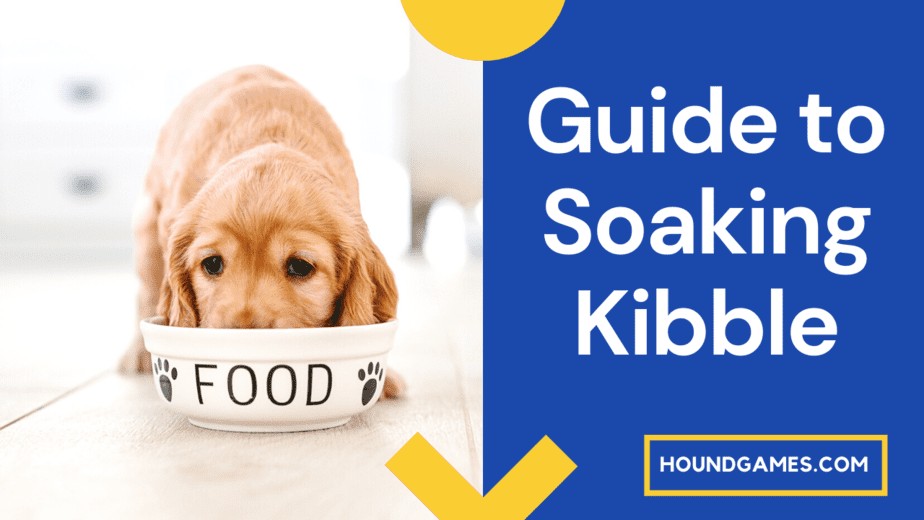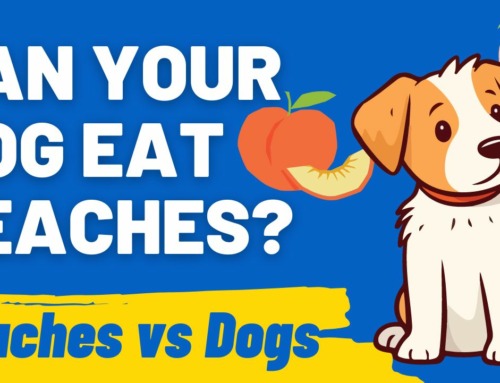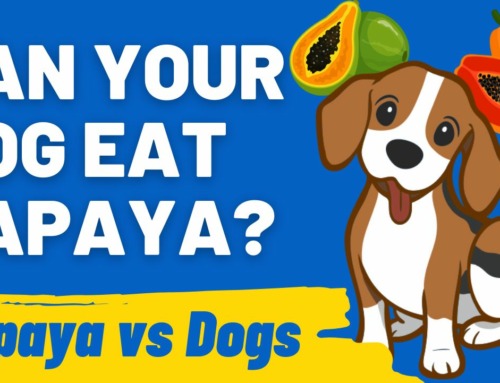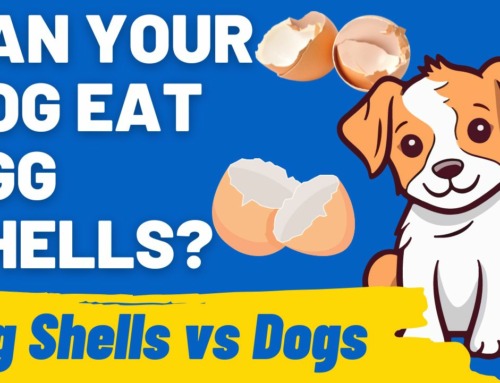If you’ve spent any time on social media as it relates to dogs, you’ve likely seen a variety of posts about soaking kibble with water. Some people insist that soaking kibble is necessary for a healthy dog, and others insist the exact opposite.
We’ve dug up the actual science on the matter of when it comes to soaking kibble with water, so you can decide if it’s the right choice for you and your puppy.
Do you need to soak kibble for puppies?
When you first bring your puppy home, they’re often a small and adorable ball of fur. You may find yourself wondering how this little baby of a dog could possibly crunch and eat dry food without it being soaked in water.
However, by the time you bring your puppy home, they are likely already capable of eating dry kibble without water.
Puppies first begin to have teeth around the time they are just a couple of weeks old. At this point, it’s ideal to start introducing them to food other than their mother’s milk.
However, because they are still so little and learning about how to eat, play, and move around, it’s important that puppies this young are provided a soft puppy gruel.
Puppy gruel recipes vary, but they often include dry puppy food that is soaked in water and/or puppy milk replacer.
When puppies are just 3-4 weeks old, they are given this soft mixture of dry food soaked in water or milk replacer, often in a low, shallow pan. The puppies tend to get quite messy as they explore this new and yummy food!
Initially, the mixture is much more water than kibble and is allowed to soak for plenty of time to be soft. As the puppies grow up, they gradually transition to solid, dry foods as their meals are mixed with less and less water and allowed to soak for less time.
Can puppies even eat dry kibble?
Yes, puppies can definitely eat dry food without water, especially if the puppy is already old enough for you to have welcomed it home into your family. We have a post on this subject here: When Can Puppies Eat Kibble? Answered!
Before they are 6-8 weeks, puppies may not yet be able to eat solid kibble. Their teeth (and coordination) are still developing prior to this, so they may not have the ability to chew and swallow solid foods – it’s a new concept for a puppy that has only ever nursed.
Thus, soaking kibble into a “puppy gruel” is often a technique breeders and others raising puppies use to help wean puppies onto solid food, rather than just milk from their mom.
If your puppy doesn’t like eating their kibble, then be sure to read our post Puppy Won’t Eat Kibble, Do This!
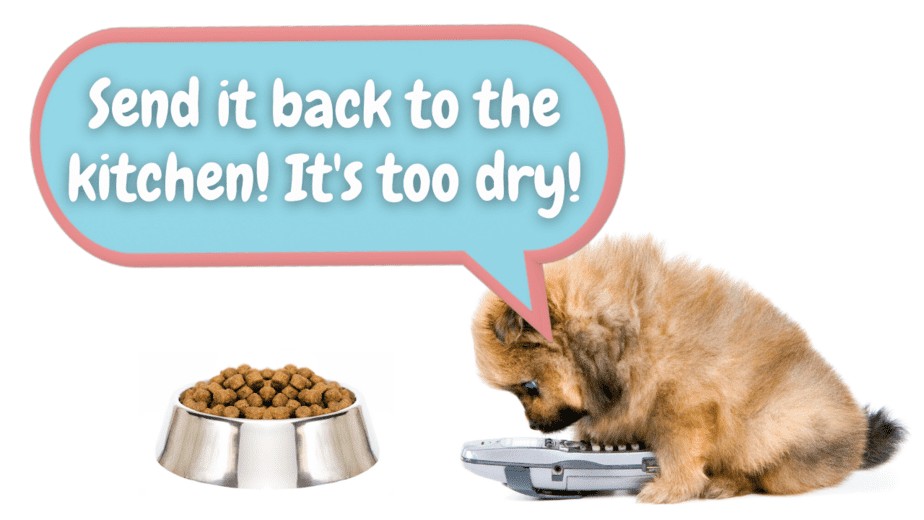
When can puppies have dry kibble?
Puppies can have dry kibble by the time they are 8 weeks old as long as they have been adequately adjusted to it. All puppies should be fully capable of eating regular, un-soaked dog food by 10-12 weeks of age.
There may be some individual puppies, especially of smaller breeds, that need some kibble soaked when they are first brought home at 8 weeks. However, except in very rare circumstances where a medical condition prevents a dog from eating dry food, the above is true.
If you would like to use your puppy’s kibble as treats, then be sure to read our post Can Kibble be Used as Treats? (Dog trainer answers)
How long do you soak kibble for?
When soaking kibble for puppies, how long you should soak it depends on your end goal. If you are making a soft, mushy gruel for very young puppies, you will need to soak the kibble longer than if you are just soaking kibble to slow down your dog’s eating.
It will also depend on the type of kibble you are soaking. Depending on the content of the kibble and the exact manufacturing process it has gone through, it may take a longer or shorter period of time to soften.
You do want to avoid soaking for too long, as it can become a breeding ground for bacteria or insects like flies. In most cases, you only need to soak it for 10-20 minutes to achieve a softer consistency.
Soaking it in warm water, as well as using a blender or food processor to break the kibble apart, can help speed up how long it takes to soak your kibble if your end goal is mush.
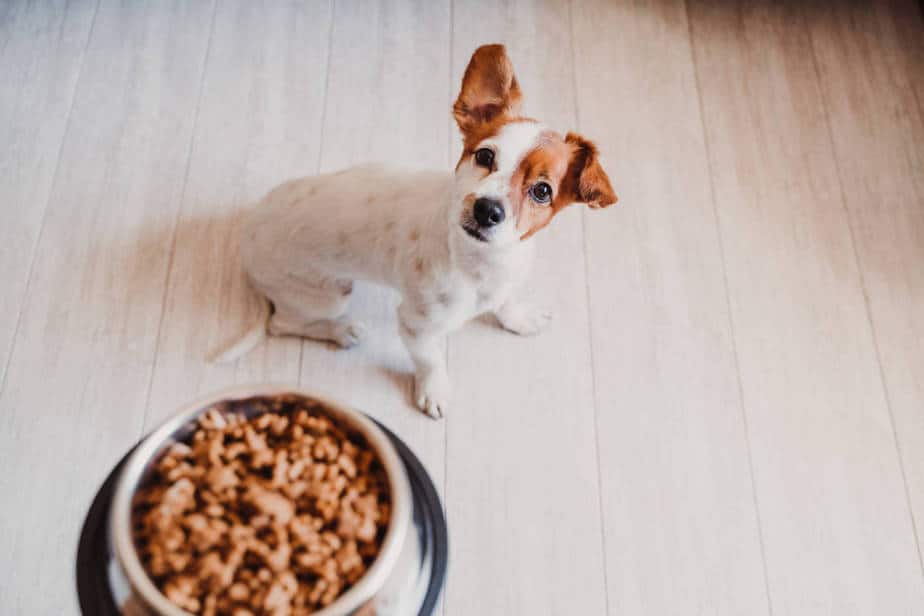
How long is soaked kibble good for?
Soaked kibble should not be used for more than one meal. When kibble is soaked, the moist environment creates the perfect place for bacteria to replicate.
For more information on kibble storage be sure to read our post Dog Food Storage: Leftover kibble and wet food
Typically, dry dog food is processed (such as through extrusion) so that bacteria are killed, the kibble is cooked, and it is relatively free of moisture. This is important for the longevity of a bag of kibble, as bacteria usually require moist and warm environments.
Most dry dog foods have about 10-12% moisture. Compare that to the 75-78% moisture that is found in most canned foods. You can see why dry dog food can remain shelf-stable, even when the bag has been opened, and canned dog food needs to be refrigerated after opening.
Potentially dangerous bacteria, such as Staphylococcus aureus, Salmonella, E. coli, and Campylobacter, can double their number in just 20 minutes when the temperature is between 40-140 degrees Fahrenheit (40 – 60 degrees celsius). Room temperature falls right in the middle of this range for most people.
While dog food is processed to get rid of much of the bacteria that might be found on the ingredients, most things outside of the operating room at a hospital are never completely sterile. Thus, when the environment becomes suitable – moist, warm, and full of nutrients – bacteria begin to multiply.
For these reasons, the USDA Food Safety and Inspection Service offers guidance on how long food can be safe at room temperature. This includes the fact that food that is normally refrigerated is only safe being left out of the fridge for up to 2 hours when the temperature is 40-140°F. If the temperature is above 90°F, the time out of refrigeration that is recommended shortens to just one hour.
Besides bacteria, flies and other insects in the environment can pose a potential threat as well.
It takes just minutes for a female fly to land on soaked kibble and lay eggs. From there, it only 12-24 hours for the eggs to hatch, consequently filling your pet’s food with maggots.
Like bacteria, flies seek out a moist environment with plenty of available nutrition to lay their eggs. A mushy mess of dog food is often the perfect place in the mind of a fly.
Researchers have also found that temperature affects the rate at which flies or varying species lay eggs, too. One study found that a single female common housefly can lay roughly 30-45 eggs each day when temperatures are around 80°F.
Besides the eggs and maggots themselves, flies can also bring a variety of disease-causing organisms to your puppy’s soaked kibble. Flies have been shown to transmit over 65 illnesses that infect people – and many of these, such as Salmonella, are a potential problem for dogs, too.
Because of the risk of bacteria or other disease-causing organisms making soaked kibble unsafe to eat, you should only soak enough kibble to feed your dog a single meal.
You should also make sure your dog eats that meal quickly, rather than leaving it to sit out all day. Remove and throw away any moistened or canned puppy food that isn’t eaten within a few hours at most.
Finally, remember to store your pet food appropriately to not only keep it safe for your dog, but to ensure it lasts and stays nutritious.
Are you interested in reading this: Do Dogs Get Bored of Their Food? Answered!
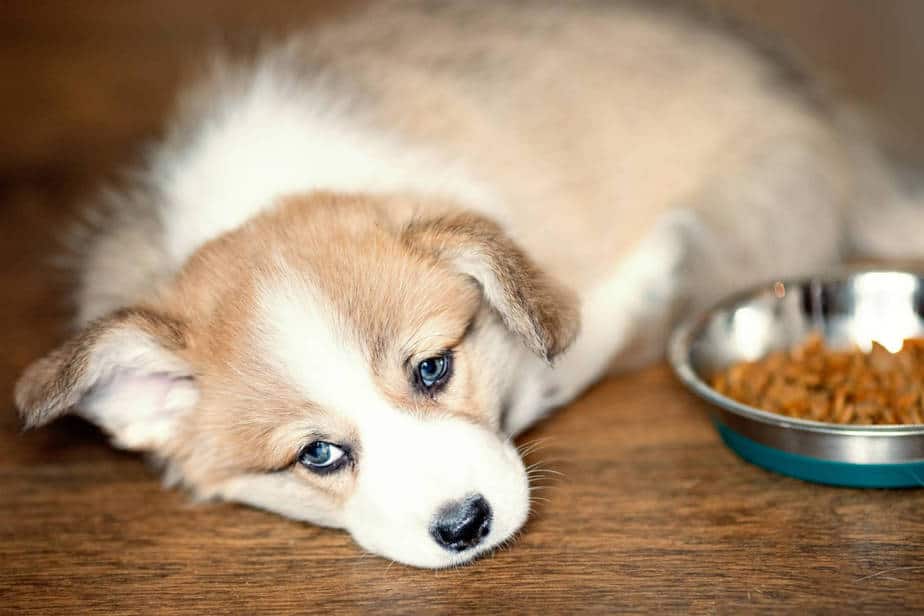
Does soaking kibble help digestion?
One claim that’s been frequenting spaces on the internet is that soaking kibble in water helps with digestion. It might seem logical, but is there actually any truth to the claim?
First, let’s look at what digestion is. Digestion “is defined as the breakdown of food molecules by enzyme action (or other animal-mediated processes) into smaller chemical components that an animal is capable of distributing to the tissues of its body.”2
In short, digestion breaks down food into small pieces that the body can use.
These pieces are truly small – often not visible without a microscope – and consist of amino acids, fatty acids, proteins, carbohydrates, vitamins, minerals, and water.
Water alone cannot break foodstuffs into these tiny building blocks. Instead, the acidic environment of the stomach and enzymes found within the digestive tract are needed.
In most dogs, it’s the pancreas that secretes these enzymes, but enzymes can also be found on fresh foods and as a supplement for dogs that need it.1
However, it’s still well known that water is important to digestion. Water is also critical to the life and health of your puppy, as it accounts for 40-80% of their body mass!
So, if water aids digestion and is so important to the overall makeup of a dog’s body, doesn’t it make sense to soak the kibble to help with digestion?
Well, it depends. For the vast majority of dogs, they drink enough water to stay healthy and hydrated as long as fresh water is available to them. Cats are much more prone to dehydration from not drinking water, but it’s not a common problem for dogs.
Water aids in digestion in several ways, including by providing the energy needed for hydrolytic enzymes to catalyze the breakup of various molecules.1 Water also can set up gradients to promote the absorption of nutrients, as well as flush waste material through the digestive and urinary systems.3
However, your dog’s body is already excellent at regulating these processes. The fact that water enters your dog’s stomach at the same time as their food does not likely make a huge difference to digestion.
While studies in rats have shown that they will eat less food when their water is restricted, in order to maintain appropriate water to food ratio for digestion, this doesn’t mean water and food need to be enjoyed at the same time.
In fact, studies in humans have found that adults enjoyed the same size meal whether they were given a small (restricted) amount of water, or their normal amount of water.
Both these studies point to how well an animal or human can regulate their water and food intake to ensure they are able to digest their food. And that we should consider adequate water intake over the course of the day, rather than at the same time as a meal.
As long as your dog has regular access to fresh water, a healthy puppy will regulate its water intake just fine on its own.
Water is absolutely important to digestion. It’s important that the body is hydrated so it can use the water for various processes during digestion. It’s not so important if there’s food and water in your dog’s stomach at the same time, or if it’s soaked prior to ingestion.
If your dog is struggling to digest their food (often noticed when they produce large amounts of feces or when health conditions arise from a lack of nutrients), soaking kibble in water isn’t likely to solve the whole problem.
Instead, it may be the case that your dog would benefit from enzymes or probiotics (ask your vet for specifics).1 Your puppy might also just need a different brand of food, as the digestibility of the food has a lot to do with the quality of ingredients and how they are prepared.
Are you interested in reading our post, Do Puppies Eat a Lot? (What You Need to Know)
How much does kibble expand?
The degree to which kibble expands varies with the kind of kibble and the situation that’s being compared. Kibble may not expand the same in a glass of water as it does in your dog’s stomach.
While it’s true that dry dog food does not have a high moisture content, that doesn’t mean it’s going to expand so much in your dog’s stomach that it will cause problems.
Even studies that have looked at risk factors of bloat, a serious and sometimes deadly condition where the dog’s stomach twists and fills with air, have found no difference in the likelihood of bloat when dogs are fed canned food VS dry food. Both types of food appear to exit the stomach in the same amount of time.
Kibble may appear to expand quite a bit when allowed to soak in water for a long time. It might seem like it’s going to expand so much in your dog’s stomach that it’ll be a recipe for disaster!
However, it’s important to remember that the stomach (and the rest of your dog’s body) is very good at regulating how much water is necessary for digestion. Your dog’s stomach is not an endless source of hydration for kibble.
Stomachs are also made to stretch! The average human stomach only has a capacity for 2.5 ounces when empty, expanding to an entire quart (32 ounces) when you eat food.
The digestive tract is also working to break down food into tiny molecules and distribute them throughout the body. Food doesn’t usually remain in a dog’s stomach longer than 8 hours (with a range anywhere from 4-10 hours depending on the size of the dog and the size of the meal).
So, while kibble can expand within a dog’s stomach, it’s not going to expand to the point of harming a dog. It’s no different than if you eat a handful of cereal – cereal often expands when forgotten about in a bowl with milk, but it doesn’t expand so much it hurts you when it’s in your stomach!
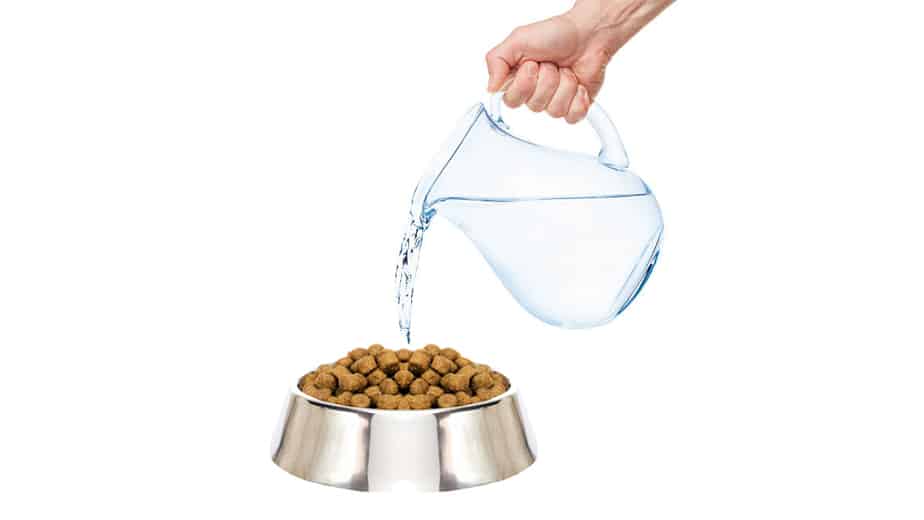
Why Add Water to Kibble
Now that we’ve debunked a few reasons why people often add water to their puppy’s kibble, it’s time to look at a few reasons why you might want to mix their kibble with water. You do not have to add water to kibble – unless told to do so by your dog’s veterinarian – but there are a few reasons to consider it anyways.
For some dogs, adding warm water to their kibble can help encourage them to eat. If your dog is turning their nose up at food, adding warm water can entice them to eat because it brings out the scent of the kibble.
Deborah Linder, a board-certified veterinary nutritionist, notes that adding broth to your puppy’s food can also be a great way to help them feel more full without the addition of many calories. It also can be helpful for the rare dog that requires more moisture in their diet and doesn’t naturally regulate their water intake.
You might like to read our post about this called Can Dogs Have Store-Bought Chicken Broth?
It can also just be a fun way to mix up your dog’s food, or a way to help them slow down as they eat.
So, while adding water to your dog’s kibble isn’t necessary because it’s likely not going to change their overall water intake or make their food easier to digest, it’s not bad to add water to their kibble.
If you are enticing a picky dog to eat, or helping your dog eat fewer calories, it might even be beneficial!
But if you choose not to soak your dog’s kibble, that’s OK too – your dog will still digest their food and they won’t become dehydrated from a lack of water as long as water is available.
1Dog Health and Nutrition for Dummies (2001). M. Christine Zink, DVM, PhD.
2Animal Physiology, 3rd Edition (2012). Richard Hill, Gordon Wyse, and Margaret Anderson.
3Dog Food Logic: Making Smart Decisions for Your Dog in an Age of Too Many Choices (2014). Linda P. Case.

